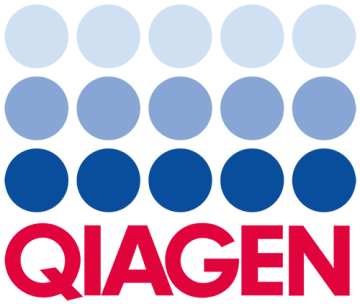
Digital PCR assays for pancreatic cancer gene variants
Order ready-to-use dPCR assays
Revolutionizing pancreatic cancer research with precision dPCR assays
Pancreatic cancer researchers face significant challenges from the lack of early detection biomarkers, which often leads to late diagnosis and limited treatment options. The disease's genetic complexity further complicates the development of effective therapies, as pancreatic tumors exhibit diverse mutations that influence their behavior and treatment response.
Digital PCR (dPCR) has emerged as a potent tool in this field, offering ultra-sensitive detection capabilities to identify and quantify minute amounts of DNA. By enabling precise quantification of genetic alterations at a single-molecule level, dPCR can uncover rare variants associated with early-stage pancreatic cancer and aid in identifying potential biomarkers for early detection. This technology supports the elucidation of pancreatic tumors' complex genetic landscape and the development of personalized treatment approaches.
Explore pancreatic cancer related dPCR assays by gene
Pancreatic cancer is one of the most lethal malignancies and primarily includes two common forms: pancreatic adenocarcinoma, which accounts for about 90% of cases, and pancreatic neuroendocrine tumors. The progression and prognosis of this disease are influenced by mutations in several key genes, such as KRAS, CDKN2A, TP53 and SMAD4. These mutations not only shed light on the pathogenesis of the disease but also present viable targets for potential therapeutic interventions.
Our collection of dPCR LNA Mutation Assays equips researchers with precise, sensitive tools to explore the molecular underpinnings of pancreatic cancer and advance the identification of biomarkers and novel therapies.
Gene | Mutation Type | Mutation (CDS) | Mutation (AA) | COSMIC ID (COSV) | COSMIC ID (COSM) | Codon | dPCR Mutation Assay |
|---|---|---|---|---|---|---|---|
| BRAF | Substitution - Missense | c.1798G>A | p.V600M | COSV56075762 | COSM1130 | 600 | DMH0000218 |
| BRAF | Substitution - Missense | c.1798_1799delinsAA | p.V600K | COSV56057713 | COSM473 | 600 | DMH0000001 |
| BRAF | Substitution - Missense | c.1798_1799delinsAG | p.V600R | COSV56058419 | COSM474 | 600 | DMH0000002 |
| BRAF | Substitution - Missense | c.1799T>A | p.V600E | COSV56056643 | COSM476 | 600 | DMH0000004 |
| BRAF | Substitution - Missense | c.1799T>G | p.V600G | COSV56080151 | COSM6137 | 600 | DMH0000068 |
| BRAF | Substitution - Missense | c.1799_1800delinsAA | p.V600E | COSV56059110 | COSM475 | 600 | DMH0000003 |
| BRAF | Substitution - Missense | c.1799_1800delinsAT | p.V600D | COSV56059623 | COSM477 | 600 | DMH0000039 |
| PIK3CA | Substitution - Missense | c.3139C>T | p.H1047Y | COSV55876499 | COSM774 | 1047 | DMH0000209 |
| PIK3CA | Substitution - Missense | c.3140A>G | p.H1047R | COSV55873195 | COSM775 | 1047 | DMH0000036 |
| PIK3CA | Substitution - Missense | c.3140A>T | p.H1047L | COSV55873401 | COSM776 | 1047 | DMH0000062 |
Discover the QIAcuity family of dPCR instruments
*FDA ‘Medical Devices; Laboratory Developed Tests’ final rule, May 6, 2024 and European Union regulation requirements on ‘In-House Assays’ (Regulation (EU) 2017/746 -IVDR- Art. 5(5))
Frequently asked questions
How do dPCR LNA Mutation Assays benefit cancer researchers?
How does ARID1A contribute to the development and progression of pancreatic cancer?
In what ways is BRCA1 involved in the pathogenesis of pancreatic cancer?
What is the role of BRCA2 in pancreatic cancer development?
What is the significance of CDKN2A in the progression of pancreatic cancer?
How do KRAS mutations affect pancreatic cancer?
How is PIK3CA implicated in the pathology of pancreatic cancer?
What role does PTEN play in pancreatic cancer mechanisms?
How is RNF43 involved in the progression of pancreatic cancer?
How is SMAD4 involved in pancreatic cancer?
How does TP53 contribute to pancreatic cancer?
Disclaimers
dPCR LNA Mutation Assays are intended for molecular biology applications. These products are not intended for the diagnosis, prevention, or treatment of a disease.
The QIAcuity is intended for molecular biology applications. This product is not intended for the diagnosis, prevention or treatment of a disease. Therefore, the performance characteristics of the product for clinical use (i.e., diagnostic, prognostic, therapeutic or blood banking) is unknown.
The QIAcuityDx dPCR System is intended for in vitro diagnostic use, using automated multiplex quantification dPCR technology, for the purpose of providing diagnostic information concerning pathological states.
QIAcuity and QIAcuityDx dPCR instruments are sold under license from Bio-Rad Laboratories, Inc. and exclude rights for use with pediatric applications. The QIAcuityDx medical device is currently under development and will be available in 20 countries in H2 2024.


